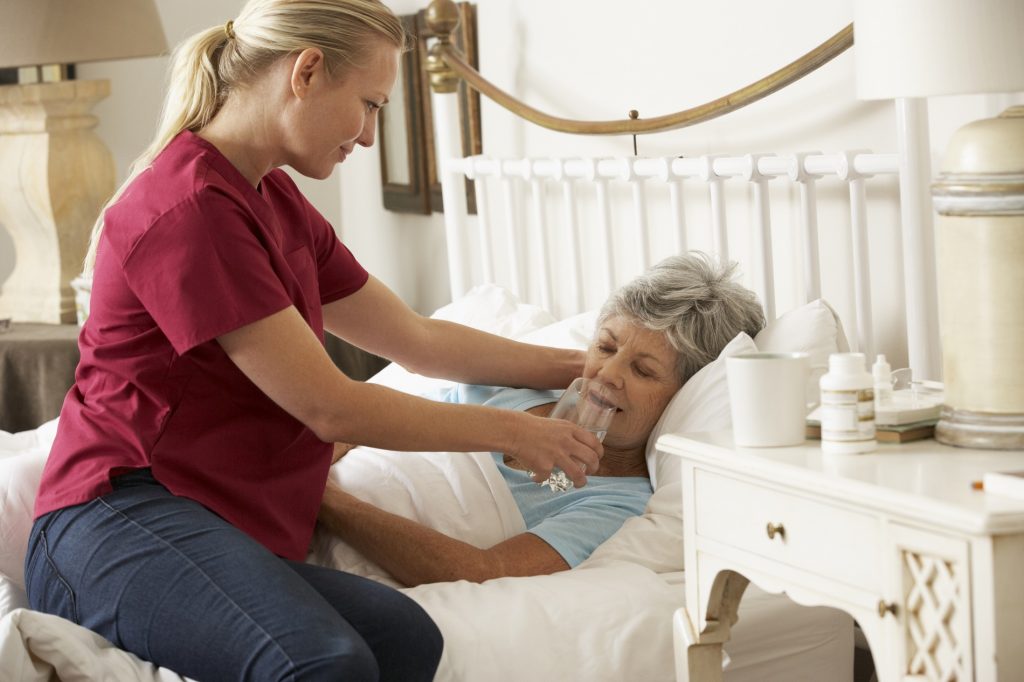Dehydration Can Be Deadly For The Elderly
Dehydration in older individuals is a real problem and many times is the unrecognized cause of hospitalizations, morbidity and mortality. Dehydration is often linked to infections that can be fatal. It becomes an even bigger problem during the heat of the summer months or during a heat wave. Those who care for the elderly must become familiar with the risks of, and methods of prevention for dehydration in the Seniors they care for.
Early diagnosis of this condition is essential but is sometimes difficult because the classical physical signs of dehydration may be absent or misleading in an older person.
Older adults are more prone to developing dehydration due to losses in muscular mass, total body water, and bone mass. If an older individual is sick, they usually become dehydrated more quickly without ever being aware of it. Additionally as we age, the thirst sensation decreases thus compounding the problem.
Some of the physical signs of dehydration to watch for in an older individual, include:
- Dry, cracking skin
- Frequent headaches
- Parched, chapped lips
- Low urine output and/or constipation
- Nasal passages that are particularly dry and/or bleeding
In cases of severe dehydration, changes in blood pressure may also occur. The individual may also act excessively irritable, disoriented or confused and may become dizzy or lightheaded. Prompt intervention is crucial.
How is Dehydration Treated?
The best treatment for dehydration is to prevent it from occurring in the first place. If that is not possible then fluid replacement is the next step.
Preventing Dehydration
Prevention is best achieved by early detection and measures taken to prevent fluid loss. Caregivers and health care professionals should be constantly aware of the risk factors and signs of dehydration in elderly patients. Strategies should be implemented to ensure that the older individual maintains a normal level of hydration. This can be accomplished by encouraging the consumption of fluids frequently and by offering a variety of liquids. Steady levels of hydration can be best maintained in older adults by consuming smaller amounts of liquids more frequently throughout the day.
It is important to note that alcoholic beverages as well as tea and coffee (because of their high caffeine content) can contribute to dehydration and should be avoided. If they are consumed, then additional liquids are needed to offset any fluid loss.
Fluid Replacement
Fluid replacement involves slowly replenishing water loss, usually over 48 hours, by drinking liquids or by an intravenous solution (IV).
The best forms of replacement fluids for rehydration include:
- Water
- Clear broths
- Popsicles
- Jell-O
- Drinks that contain electrolytes (Pedialyte, Gatorade, Powerade, etc.)
Monitoring urine output is the best way to determine if the rehydration therapy is working. When the body is dehydrated, the kidneys try to hold on to as much fluid as possible thus urine output is decreased and the urine itself is concentrated. As treatment begins, the kidneys sense the increased fluid and urine output increases.
In-Home Caregivers Must Know When To Seek Medical Help For Elderly Victims of Dehydration
A healthcare professional should always be consulted when complications exist or in the cases of diabetes. When a diabetic becomes dehydrated, additional medications such as synthesized hormones or anti-inflammatory drugs may be needed to increase fluid retention and decrease urination.
At Home Personal Care Is Here To Help You!
Whether you or your loved one needs help with personal care, supportive services, companionship or more, we are here to help! Just call At Home Personal Care today at (214) 540-4940 to get started!

